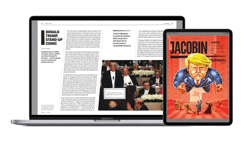
Q: What consumer trends do publishers need to be aware of?
A:
There are four trends publishers should be aware of and where possible, adapt their strategies to be in line with ongoing changes.Interpersonal communication is the first to be discussed, along with its evolution. Consumers now have greater access to communication tools than in the past, but the proliferation of social media, messaging apps, and video technologies has made them feel detached from reality. In the long run, brands that provide choices for well-being that foster closeness and bring people together will prosper.
In comparison to a year ago, consumers now lead more sustainable lifestyles, yet this is still insufficient to make a difference in their daily lives. Customers want businesses to put sustainability first and are looking for concrete, understandable proof. Businesses must demonstrate their worth by telling people about their advancements in greener living if they hope to win over customers’ trust. Customers are moving away from brands that do not prioritise sustainability, which can have a negative financial effect on businesses.
Perceptions of value have evolved as people continue to adapt to the current economic situation. Even if they are searching for the greatest deal, they are still looking for products that provide the most value for their money. This doesn’t always imply reductions; rather, it indicates that they frequently search the market for the greatest deal.
Media companies are nervous about rapidly changing technology. For publishers, most mentions of AI are concerning. Though it’s still new, this technology is here to stay. Instead of being afraid of this technology, publishers should embrace it and use it to their advantage.
Q: How are consumer shopping and spending habits changing?
A:
Publishers must try and adapt to the changing spending and shopping habits of consumers. 7 out of 10 British people have seen a decrease in their disposable income, and despite a slowdown in inflation, spending on non-essentials remains frugal. Here are a few trends publishers need to be aware of:- The rise of own-brand labels: In an effort to control their spending, consumers are shopping more wisely and switching from name brands to own-brand alternatives.
- Astute consumers: They are constantly searching for discounts and frequently gravitate towards companies that provide price cuts as opposed to bundle offers. This enables customers to concentrate on necessities at a reduced cost.
- Discount stores are here to stay: In the past, they served as a backup store for basic groceries. However, due to rising living expenses, some customers have permanently switched, choosing Aldi and Lidl as their primary grocery stores.
- Loyalty Schemes: In the UK, we’ve seen a noticeable surge in the use of loyalty cards and reward programmes across all age groups, particularly in young adults. Loyalty programmes have become increasingly significant to consumers in the past year due to rising living expenses.
Q: How is this impacting the magazine sector?
A:
The magazine market is strong even in the face of annual declines. Magazine shoppers spend 21% more in-store and report lower annual basket declines when compared to non-magazine shoppers. This implies that customers in our category are probably more affluent and prefer to reward themselves when they can. Brits are among the world’s highest magazine consumers, with an average £10 spend per person per year in the UK.Compared to a decline of 11.7% in volume over a year, total revenues have declined by just 5.9% annually. The divergence between volume and revenue performance over time can be attributed to the aggressive price increases that UK publishers have been pursuing, as well as the move towards higher cover prices in lower frequency markets.
The last three months has seen a decline in value performance year-on-year despite a stable volume picture. This illustrates that magazine consumers are being impacted by the cost-of-living crisis in the UK, as they gravitate towards less costly brands wherever possible.
Q: What strategies are publishers adopting in light of these trends?
A:
Since customers are the heart of our business, it is our responsibility to observe how their behaviour is changing. We can create a narrative for retailers using our data and insight that informs them about the market and, more importantly, explains why they should safeguard it.Publishers are already adjusting to the evolving spending patterns of their customers.
In our industry, loyalty schemes and rewards are quickly taking on a new role. Despite being relatively new to the magazine industry, there has been a noticeable rise in the number of brands choosing to use this service in place of more conventional promotional methods. We've had excellent results with customer interaction, however it does come with certain drawbacks, such as cost. Although expensive, loyalty programmes are currently one of the most successful platforms for shopper engagement and worth further exploration.
Instead of purchasing magazine bundles, consumers are gravitating towards brands that offer occasional price reductions. Price reductions are a means to thank devoted customers while also luring in new ones with lower costs from comparable titles in the same market.
Conversely, it’s not just about the magazine reader saving money. Customers are begging for high-end products. Although they are prepared to spend more, they demand more in return. Premium editions are still a good marketing tactic for brands to employ, however publishers must be transparent about what customers are receiving in exchange for additional payment.
Q: What magazine categories are doing well in the current climate and why?
A:
Reviewing our data sources, its bookazines, specials and one-shots that are really supporting the wider category. More than £1.5million in revenue was driven by Royal specials over the latest 12-months, while seasonal one-shots over the summer, Halloween and Christmas have capitalised on periods of high shopper mobility.The Music sector is also experiencing a resurgence of late, with Harry Styles and Taylor Swift products breathing life back into the category, through their appeal to a younger shopper demographic. We have also seen this growth in younger shoppers reflected in the changing purchase patterns of titles in our latest consumer data.
Our insights highlight a much larger swing away from the usual magazine consumer since the onset of the cost-of-living crisis. Rather than panicking, this has actually allowed publishers to pivot their portfolio offerings, opening the door to the creation of products more appropriately placed for these evolving audiences. Creativity is infectious and we would expect innovation to continue to ramp up into 2024 despite the tightening of consumer purse strings.
Q: How do you see consumer trends evolving over the next twelve months?
A:
With continuing changes to consumer shopping habits, supermarket switching, and a shift to own brand labels, publishers should plan ahead to provide them with the opportunity to act quickly and capitalise on the latest ‘flash in the pan’. Brand loyalty, in its traditional sense, is decreasing and the drivers of shopper attention have changed.The reduction in shoppers’ disposable income affects the impulse purchase nature of magazines – the longer it takes for a product to be released following the virality of a trend – the less likely people are to buy into it.
TikTok and other social media platforms continue to influence the consumer psyche, providing a fresh pipeline of content ideas ripe for the picking. With shoppers concerned about topics such as the rising cost of living, what posts or videos are users particularly connecting with? What is it about them that’s driving attention and how can you turn that into a saleable product on the newsstand? Content ideas are everywhere; sometimes you just have to do a double take to see them.
Q: What’s in the pipeline from Marketforce?
A:
Our ongoing research into both niche and wider market trends will continue to support this type of product innovation and development within the magazine sector.Enhanced collaboration within our business is expected to provide us with further opportunity to scale up our bookazine and one-shot programme while continuing to investigate new routes to market. We are anticipating 2024 to be a genuinely exciting year, filled with new world music tours and fad diets we can all do our best to capitalise on.
About us

With more than 30 years of experience, Marketforce leads the way in global sales, marketing and distribution for a wide range of publishing and media businesses. Owned by Future PLC, we are backed by one of Europe’s largest and fastest-growing media companies.
We are the #1 independent publisher newsstand distributor. Distribution is our core service, but our focus is also on helping publishers build their businesses through adding value. We aid product development, help determine optimal pricing and deliver customer marketing for brands that grows sales.
If you would like to hear why more publishers are choosing Marketforce, call us for a chat about getting the distribution you need.
LinkedIn: www.linkedin.com/company/marketforce
Email: hello@marketforce.co.uk
Tel: 0330 390 6464










